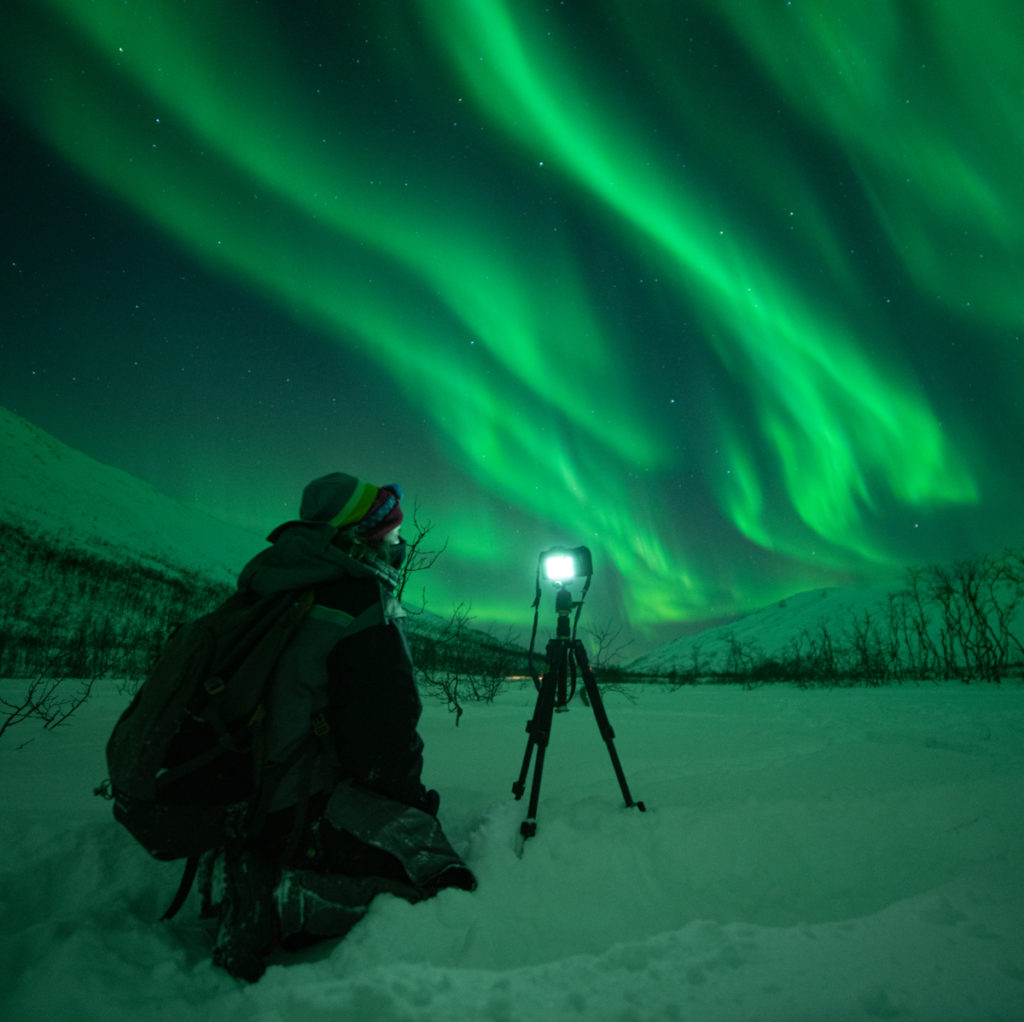Northern Lights
Here’s everything you need to know about the Northern Lights in Northern Norway.

First off. It’s a beautiful sight.
What are The Northern Lights?
The Northern Lights (Aurora Borealis) are dancing lights in the sky – usually green, sometimes pink, purple, or red.
They’re created by the sun.
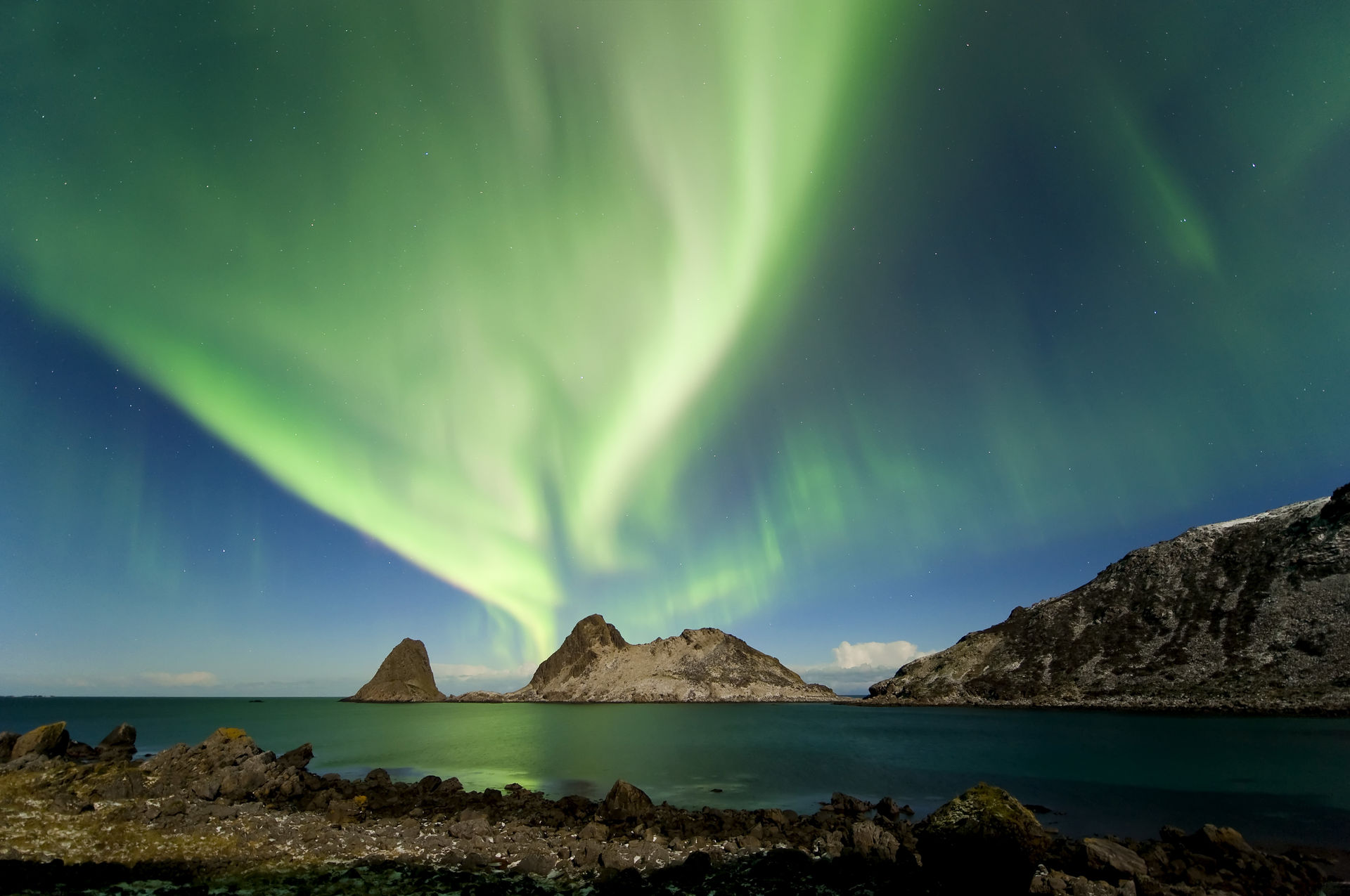
They appear when charged particles from the sun hit Earth’s atmosphere and collide with gases like oxygen and nitrogen, creating glowing light.
Earth’s magnetic field pulls these particles toward the poles, forming the aurora oval, which Northern Norway lies directly beneath.
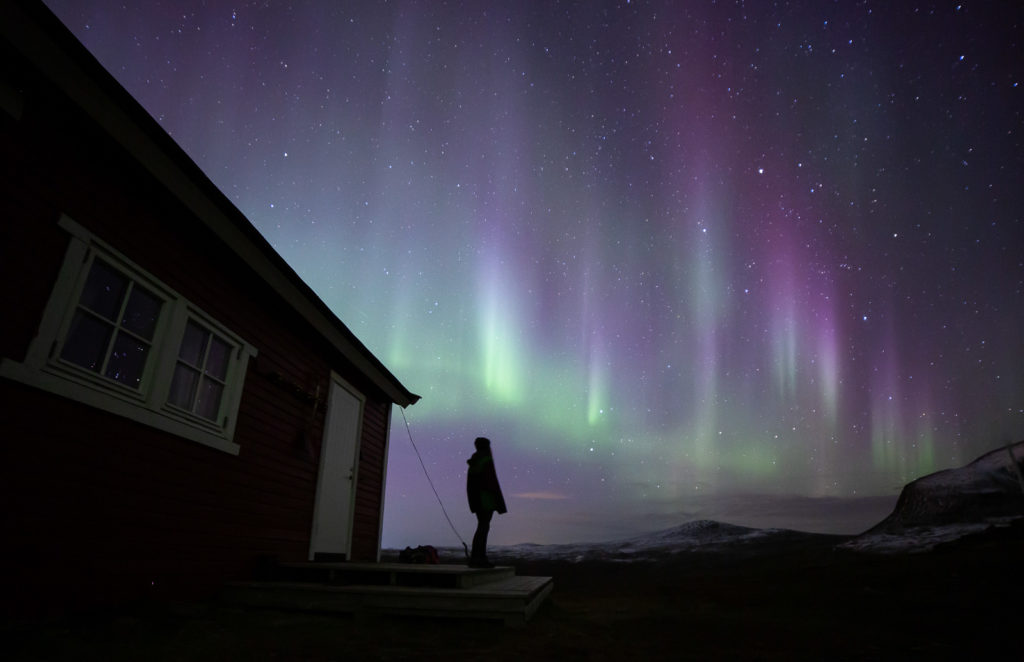
On occasion, the sky explodes into a kaleidoscope of green, white, pink and violet for a seemingly endless second.
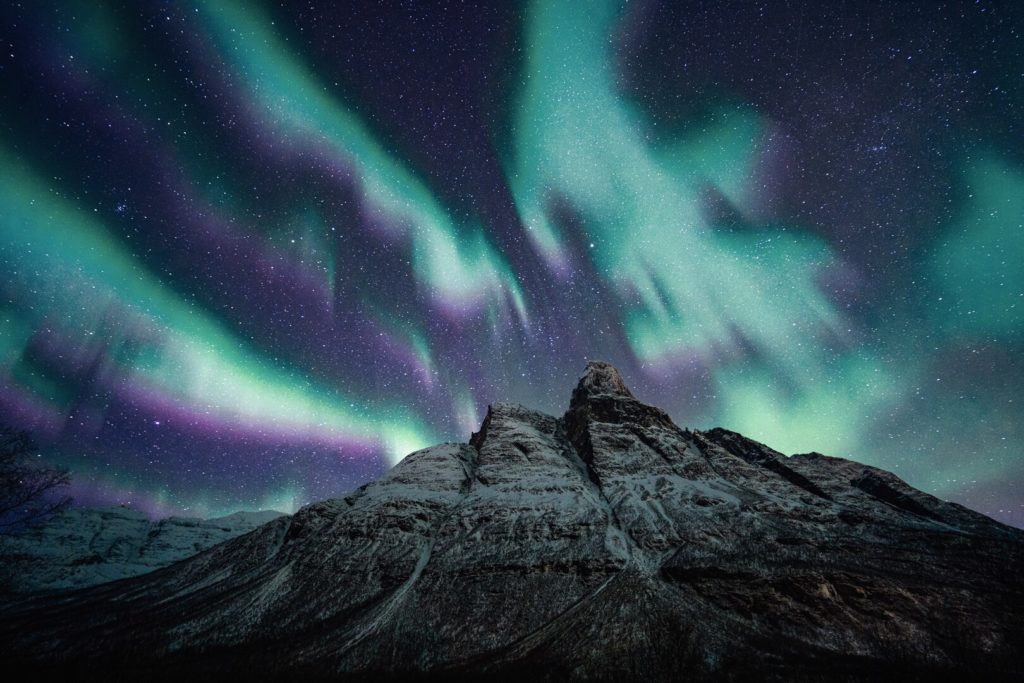
A light-footed dance, billowing curtains, arches and ribbons in a supernatural green colour.
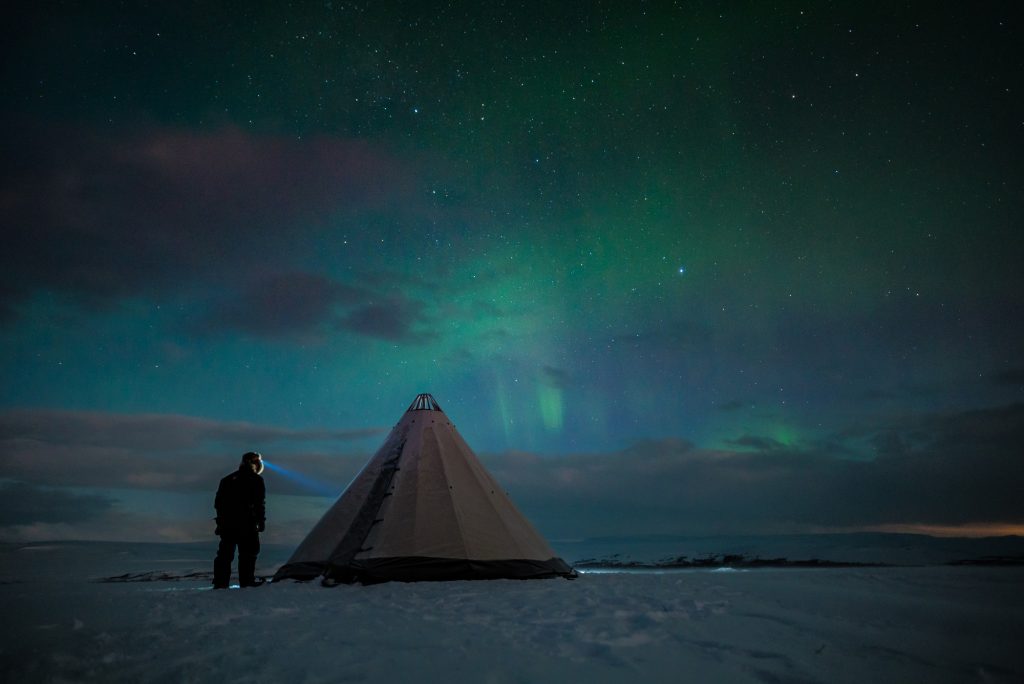
Where can you see The Northern Lights?
Northern Norway is one of the best places in the world to watch the majestic Northern Lights.
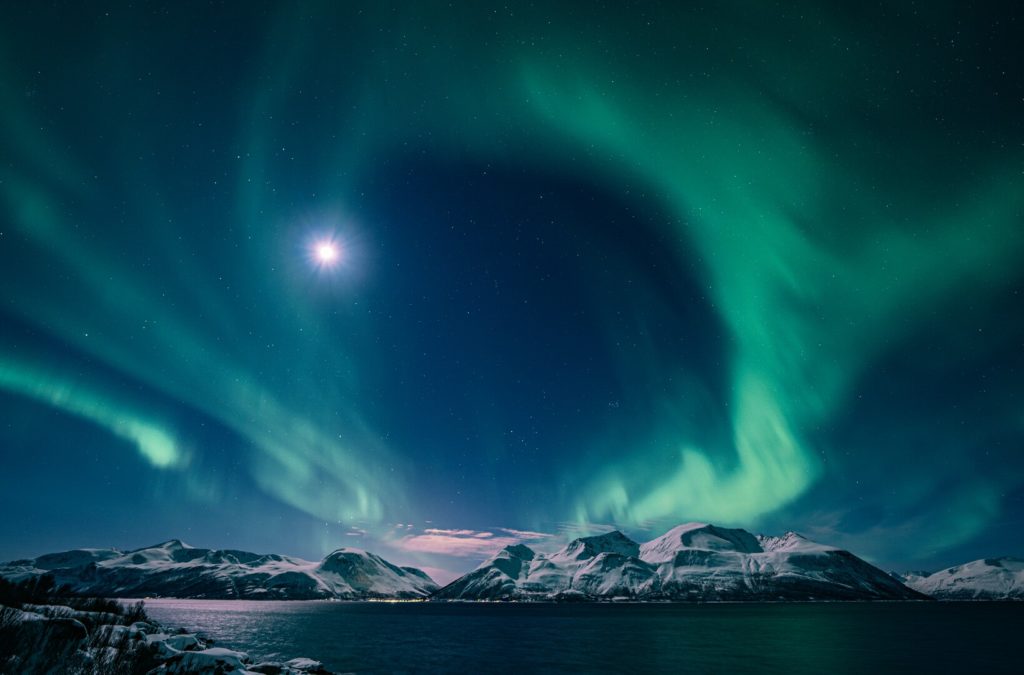
Here is why.
Northern Norway is among the areas of the globe that are located directly beneath the aurora oval, the most active Northern Lights zone on Earth.
This northern region is also easy to travel to, has good infrastructure and offers mildest climate in the Arctic.
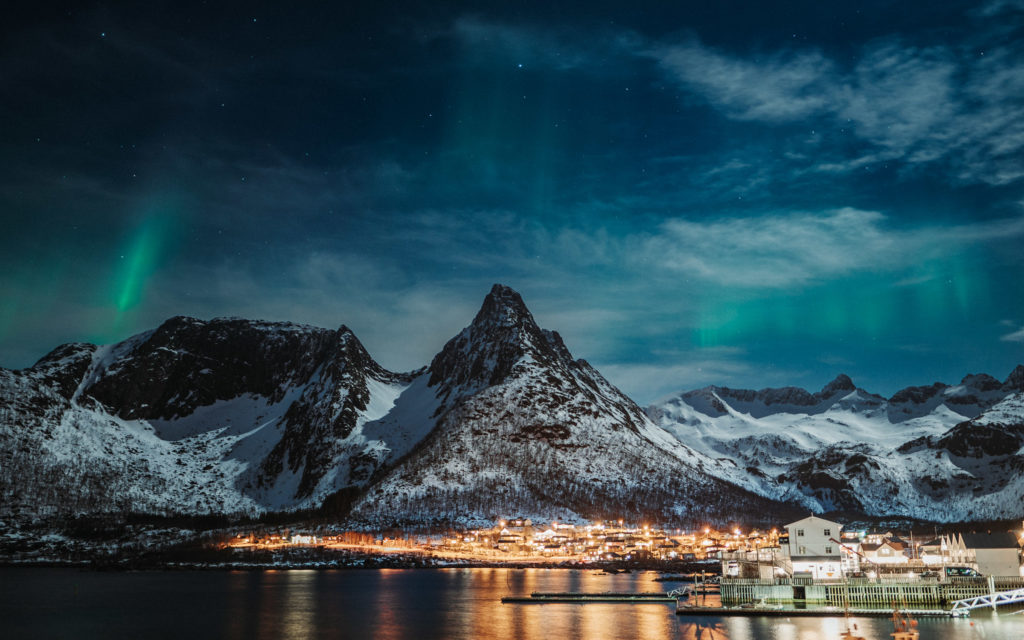
The Northern Lights can be seen from across all of Northern Norway and Svalbard.
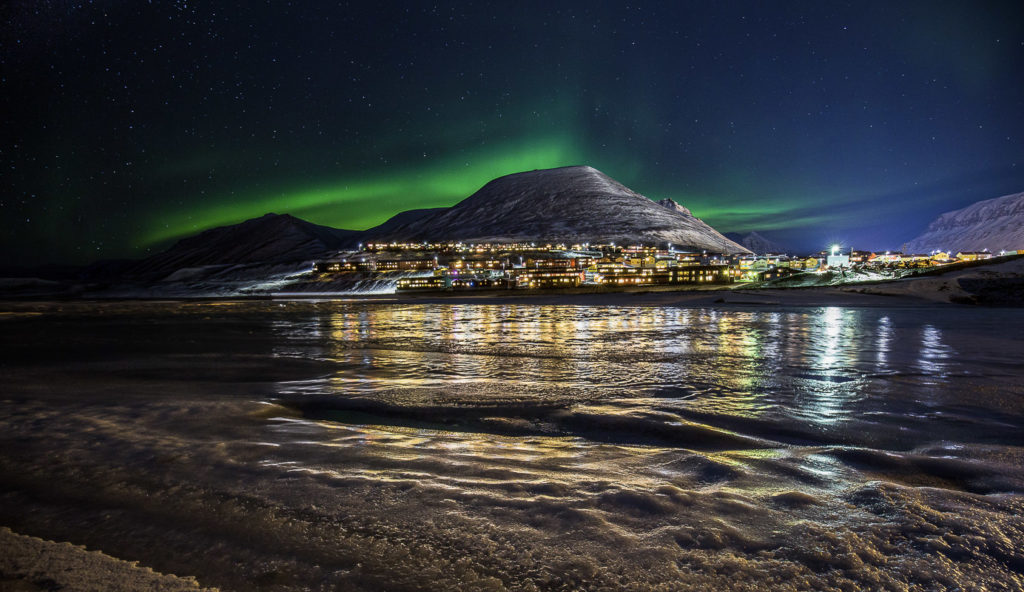
Tromsø might see the most northern light tourists, but wait! There’s more to be discovered.
The light dances across the entire region. Reflecting in the ocean around the Helgeland archipelago in the south, washing over the rugged peaks of the Lofoten Islands – all the way to the North Cape plateau, where you can see it rising above the northernmost edge of mainland Europe.
Every part of Northern Norway gives you a different experience of the Northern Lights.
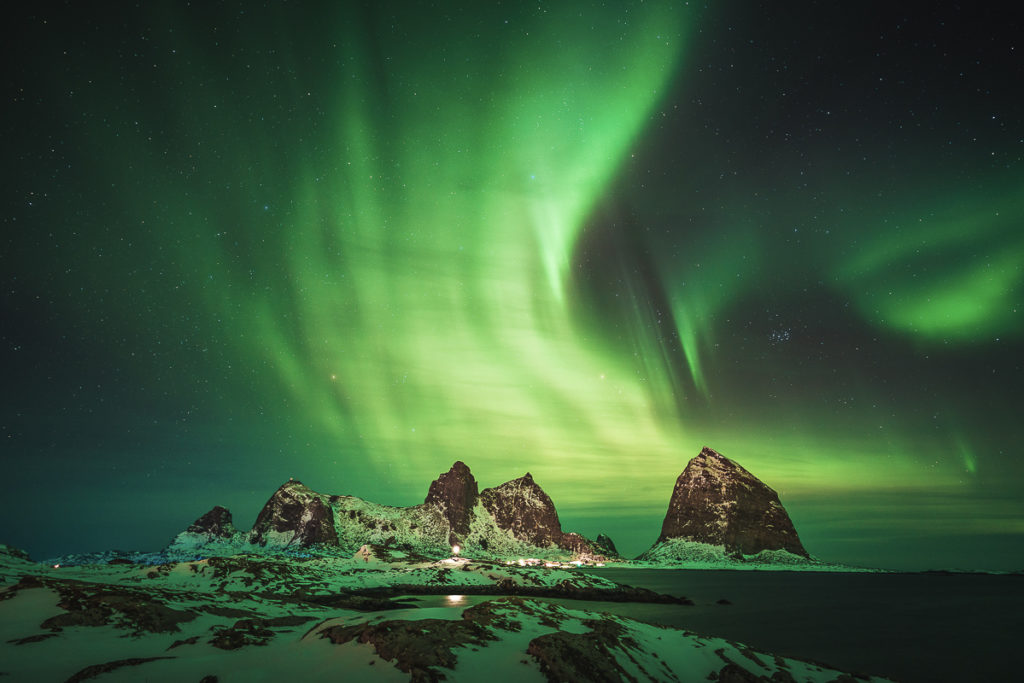
In fact, the Northern Lights are more commonly seen here than anywhere else in the world.

The Northern Lights belt stretches along the coast of Northern Norway from Lofoten to the North Cape. The altitude is typically around 100 – 300 km high, meaning it can be seen much farther afield than the mentioned regions. This means that Northern Norway is the perfect place to observe this natural phenomenon.
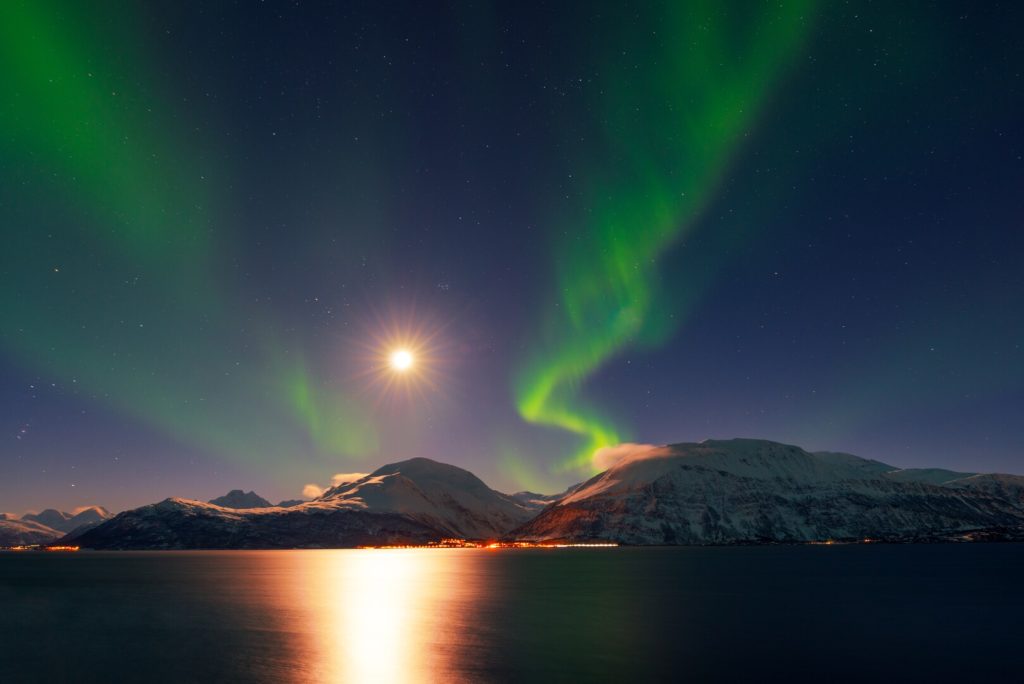
With Tromsø as your base, here are the closest regions for a northern lights getaway this winter:
When can you see The Northern Lights?
The Northern Lights season starts in the early autumn.

The Northern Lights season often begins in mid‑September and stretches into early April.
As the winter gives you the most darkness, and therefore more time to witness the northern lights – autumn and spring actually provide the strongest auroras.
The autumn and spring equinox bring peak solar storms, creating some of the strongest and brightest shows of the season.
So every night after September is a chance to chase this green, cosmic dance.
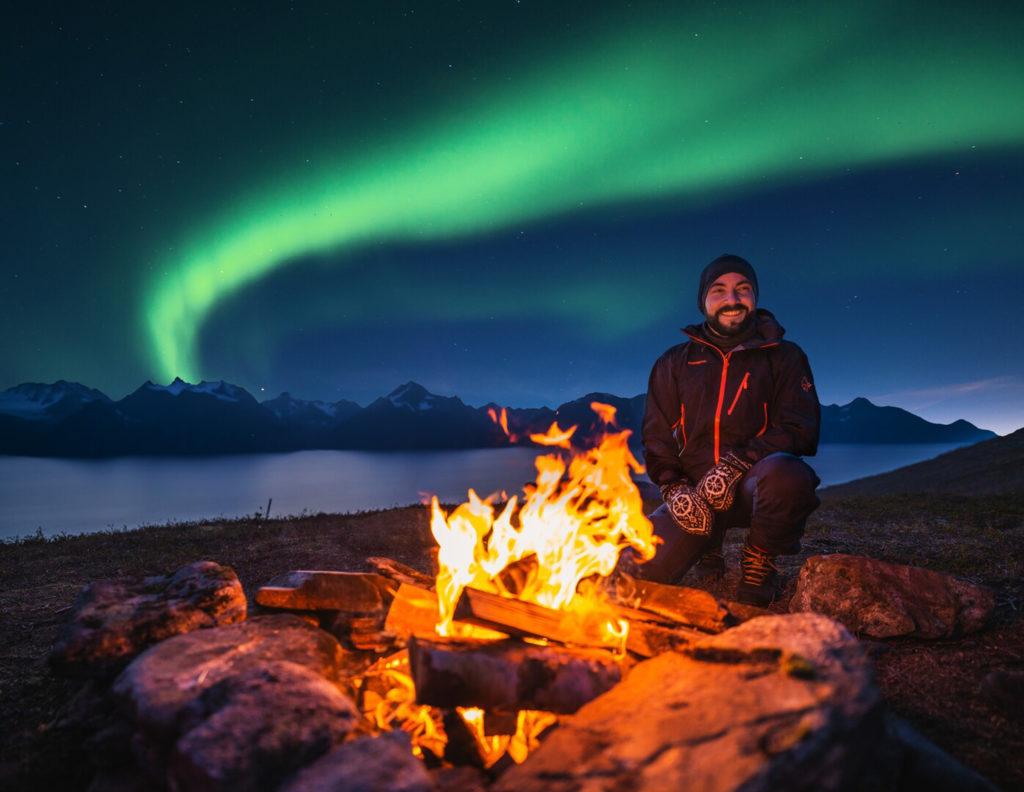
Winter 2025 will give us the strongest northern lights for a decade.
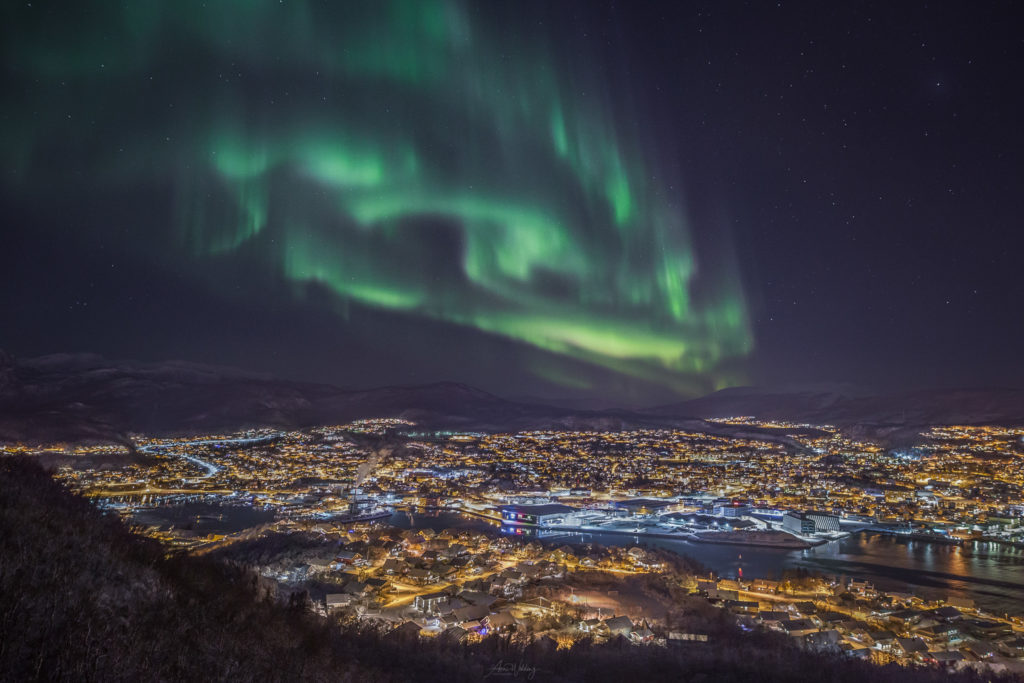
Remember how the northern lights are created by solar particles?
The Sun goes through a natural cycle that lasts about 11 years, called the solar cycle. This winter, we are heading toward the peak of this cycle, meaning the Sun is more active than usual.
When the Sun sends out more solar energy and particles, we get stronger and more frequent auroras.
That means winter 2025, is the time we’ll see the most frequent and strongest Northern Lights in a decade.
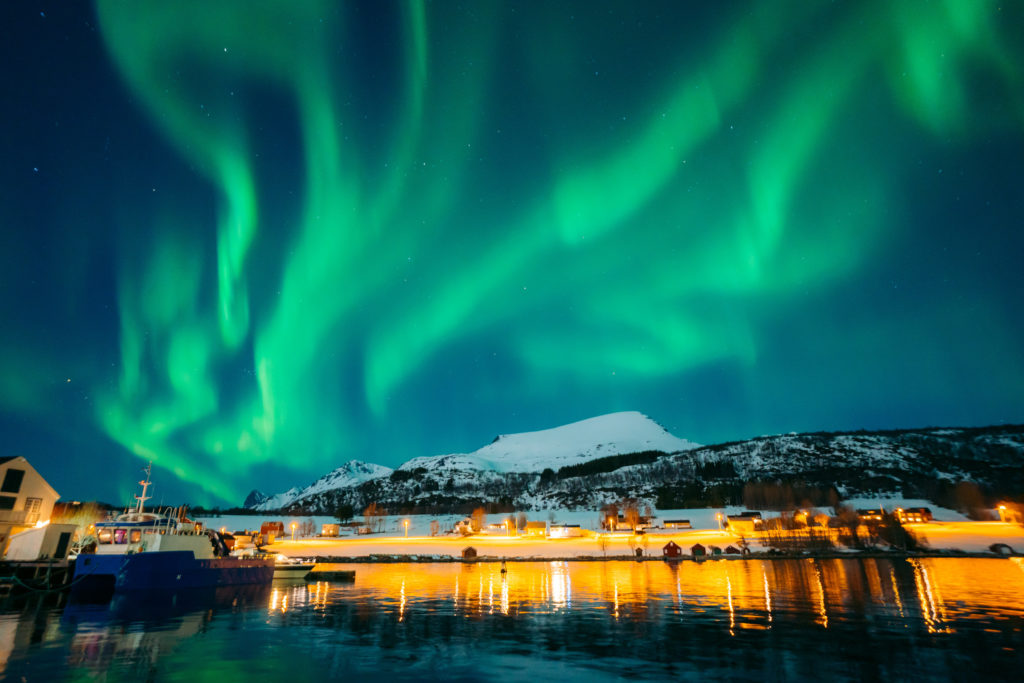
How to see The Northern Lights?
You can see them only when the sky is dark, the weather is clear, and the sun is active.

The Northern Lights can appear at any time, but you’ll spot the Aurora best when night falls, ideally from late evening to midnight.
If there is a big eruption, you might be lucky enough to spot them in the middle of a city, but for the best show you’ll want to get away from city lights.

A clear, cloud-free sky is essential, as clouds block the view entirely.
Other than that, be patient, look north. Auroras can appear suddenly.
No clouds, no light pollution, and solar activity – that’s the magic combo.
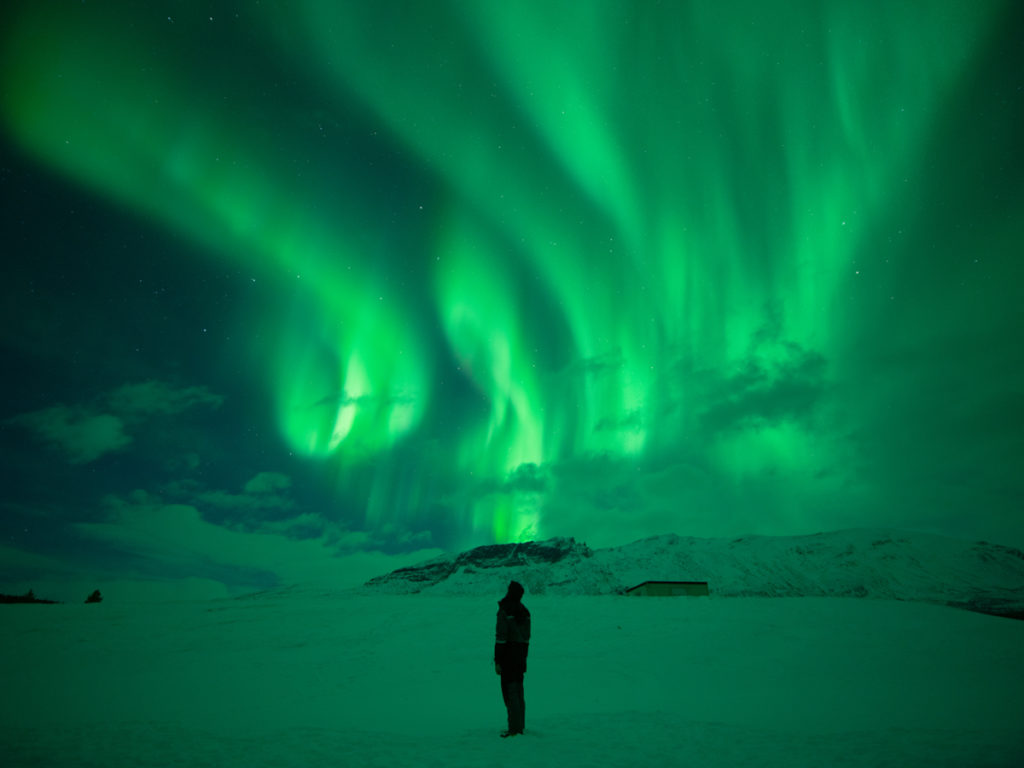
No matter what you’re doing on your holiday – you’ll look up.

Chasing the lights is an adventure in itself, though it can easily be combined with all sorts of holidays, interests and needs.
See the Northern Lights while dog sledding, sailing, skiing, or soaking in a jacuzzi – even during a whale safari or a quiet walk through snow-covered Arctic streets.
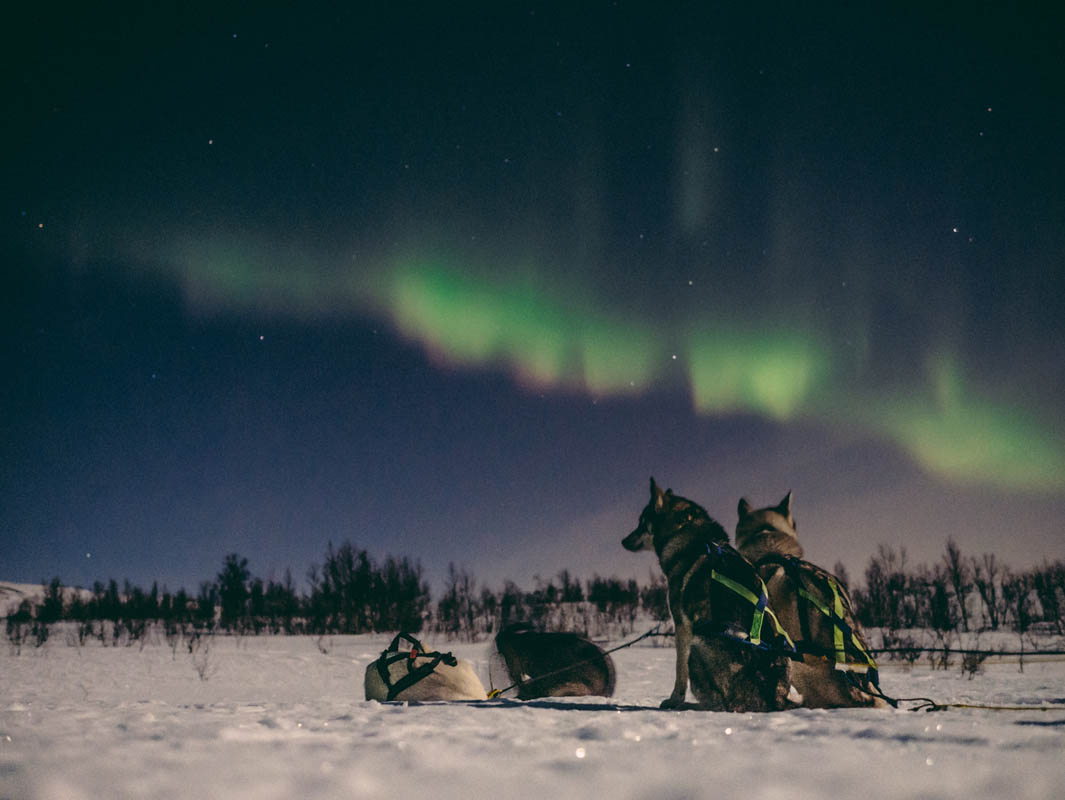
Northern Norway is in the heart of the Northern Lights belt – so what are you waiting for?
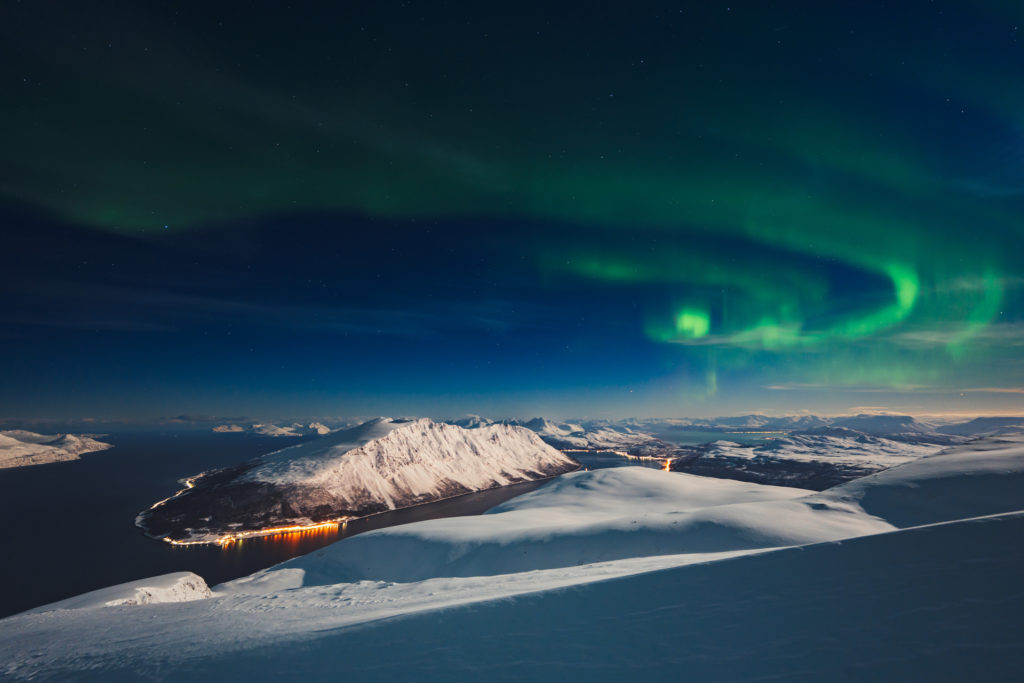
+++ lenker og kort
Fun facts about the Northern Lights
Indeed, the Aurora Australis. Exactly the same things happen in the Southern Hemisphere. However, the most intense areas of Southern Lights are either on the coast of Antarctica or in the Southern Ocean, and are observed by leopard seals and penguins only. The Southern Lights are observed in New Zealand and in Tasmania with some frequency. Northern Light geeks in fact go there to see the red auroras that tower into the night sky. However, you need a solid solar storm.
Northern Lights are not only restricted to the areas under the Northern Lights oval, such as Northern Norway. They are often observed in Southern Scandinavia, notably in Oslo and Stockholm. When there is a particularly strong solar storm, the lights can be observed both in Central and Southern Europe, occasionally down to the tropics. However, in Northern Norway, they can be observed around 90% of every clear night. In Oslo, you can expect to see them around once a month, provided you get out of the city lights. In Barcelona, they are observed around every 11th year. I heard a story of how they were observed during the Spanish civil war, because the lights were out!
No. The Northern Lights have throughout history varied in intensity. The Northern Norwegian poet Petter Dass (1647–1707) mentions various things about Northern Norway in his works, but not the Northern Lights. It is likely that the Northern Lights never appeared during his lifetime. This lack of activity is by many scientists seen as correlating with the colder climate of the 17th and 18th century, known as the “little ice age”.
People in central and southern Europe saw a lot more Northern Lights before the advent of electric lights than they do today. Thus, astronomers and scientists like Galileo Galilei (1564-1642) could observe a red light in the north at night. In a big Northern Lights eruption over Norway, the Northern Lights can be very high up, maybe 800 km above ground. That means they could be seen all the way down to Italy. However, because of the curved globe, they could only see the top part, which is red. The green main body and pink lower fringe were hidden below the horizon. Galileo Galilei consequently named the red light he saw “the northern morning red”, Aurora Borealis. Aurora is the goddess of the morning red in Roman mythology.
Kids in Northern Norway often tell each other (or was that an old uncle?) that one shouldn’t whistle at the Northern Lights, or wave at it with a white hankerchief. Then the Northern Lights would come and carry you away. Of course, no kid can resist the temptation (at least I couldn’t), so I think we can safely assume that such activities represent no major danger.
We often read, almost exclusively from non-Sami sources, that the Sami word for Northern Lights, guovssahas, means “the lights you can hear”. Unfortunately, we don’t speak Sami too well, so to be sure we rang up professor emeritus at the Sámi Allaskuvla/Sami University of Applied Sciences, and the first president of the Sami Parliament, Mr. Ole Henrik Magga. He said that guovssahas is probably derived from guovssu, which means dawn. And the Northern Lights can look like the dawn when they are strong. Okay, that explanation is a bit less colourful, but at least it is correct.
ddfds
Down on the solid ground, we pinch ourselves and ask whether we did actually see what we just saw.
